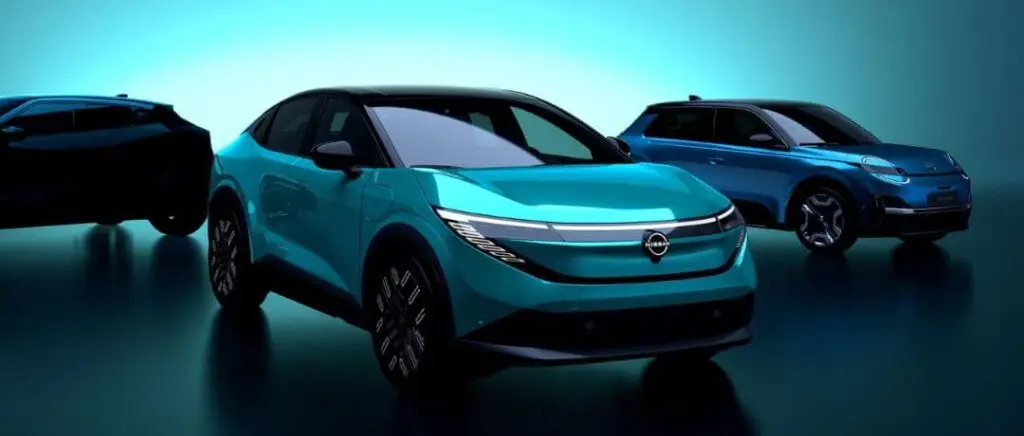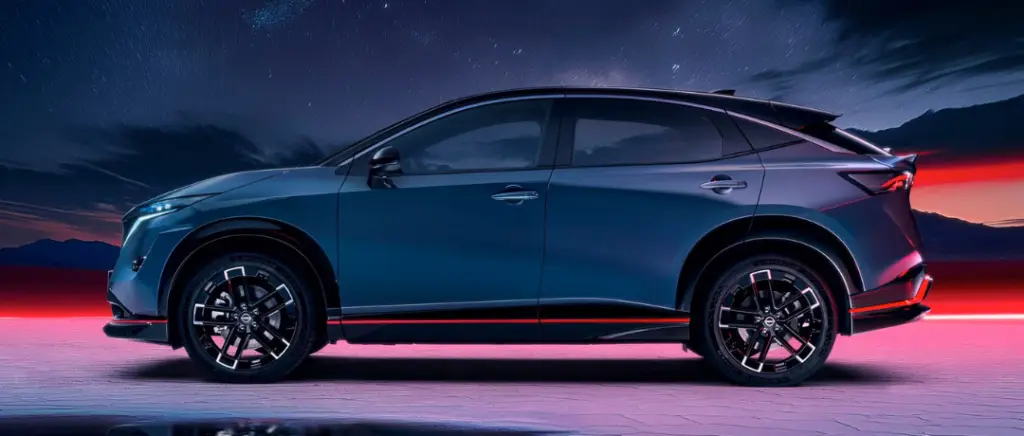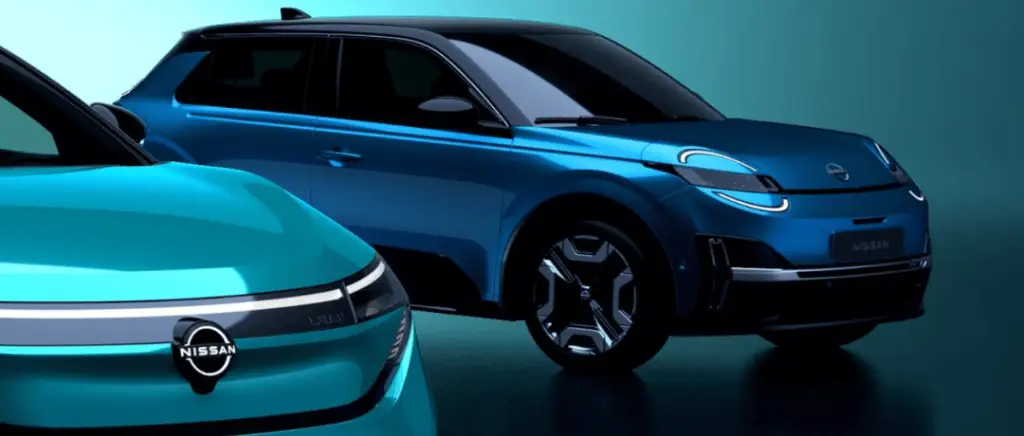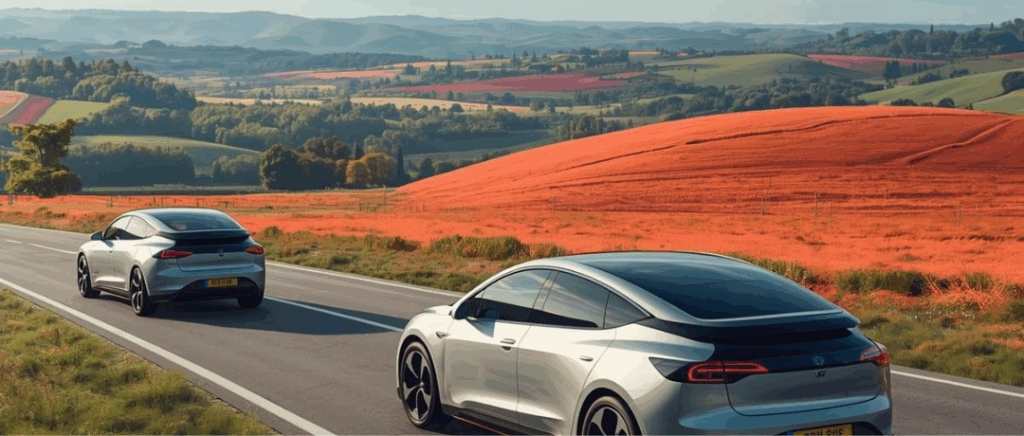New Nissan leaf 3 electric SUV: A complete redesign for a new era
The story of the Nissan Leaf: a pioneer in consumer electric vehicles
Launched in December 2010The Nissan Leaf has revolutionised the electric vehicle market by becoming the most popular electric vehicle in the world. first electric saloon mass-produced. Initially marketed in Japan and the United States, it conquered Europe and Canada at the end of 2011, accumulating over 470,000 sales in ten years150,000 of which were sold in Europe, with Norway the main market.
First generation (2010-2017): the boldness of a pioneer
Produced in Japan, the United Kingdom and the United States, the the first Leaf boasts 109 bhp (80 kW) and 280 Nm of torquereaching 144 km/h for a autonomy from 117 to 172 km (EPA) or 175 km (NEDC) depending on the version. Its compact design and battery 24 kWh (rising to 30 kWh in 2016) make it a symbol of sustainable urban mobility. Voted World Car of the Year in 2011, it legitimises electric vehicles in the eyes of the general public.
There are 3 key phases in this process:
- Phase 1 (2010-2013) Japanese manufacture, 3.3 kW charger and unique finish.
- Phase 2 (2013-2015) European production in Sunderland, batteries assembled on site, and a segmented range (Visia, Acenta, Tekna).
- Phase 3 (2016-2017) 30 kWh battery (250 km NEDC), enhanced connectivity and fast charging CHAdeMO.
Second generation (2018-2024): technological maturity
Reinvented for 2018, the Leaf adopts a new design aerodynamics (Cx 0.28) and a 40 to 62 kWh batterybearing therange of up to 385 km (WLTP). La e+ version (215 bhp, 340 Nm) reduces 0 to 100 km/h in 7.9 swhile the e-Pedal system allows single-pedal driving, optimising energy recovery. Produced at Yokosuka, Sunderland and Smyrna, it incorporates driving aids such as the ProPILOTconsolidating its benchmark status.
2024: legacy and transition
With theEuropean production to cease in 2024the Leaf is giving way to models such as the Ariya, while remaining a symbol of mass electrification. Its success has demonstrated the viability of consumer EVs, inspiring an entire industry.
A new design, combining modernity and aerodynamics
As a result, the Nissan Leaf 3 embodies a a profound break with his predecessorsboth aesthetically and technically.
This stylistic repositioning, by abandoning its compact silhouette in favour of a SUV crossover format is not just a matter of aesthetic choice: it reflects a particular strategic determination to move upmarket and meet market expectations increasingly keen on multi-purpose vehicles, capable of reconciling comfort, space and efficiency.
That said, the Leaf 3's design stands out for its clean, taut lines, inspired by Nissan's latest creationslike the Ariya and Qashqai. The front end is smoother and more dynamicwhile the silhouette adopts a crossover coupé profilewith a plunging roof and steeply raked rear window. The vertical design and clean lines, inspired by the IMs EV conceptThese reduce drag while maximising interior space. Technical choices include a panoramic roof and 19-inch wheelscombining modern aesthetics with energy efficiency.
See also our article :
This stylistic bias is not just a question of image: it goes hand in hand with a in-depth work on aerodynamicsThis is a key factor in maximising the range of an electric vehicle. Nissan has announced significant improvements in the coefficient of drag (Cx)which optimises air penetration and, as a result, energy efficiency.energy efficiency.
A design built on the CMF-EV platform
This repositioning, as explained above, is accompanied by a CMF-EV platform, more efficient battery chemistry positioned at the bottom of the chassis. Already installed on several electric cars beforehand, such as the Renault Mégane E-Techoptimised to reconcile electrical performance and modularity.
This modular platform makes it possible to3-in-1 powertrain integration (motor, inverter, gearbox) that are compact and lightweight, making them optimum weight distribution. Result: a optimised stability and a controlled energy consumptioneven on motorways.
💡Did you know ? Visit NACS port will be offered across the Atlantic for access to the Tesla network, while the rapid recharging system CCS Combo 2 in Europe will guarantee widespread compatibility with infrastructures.
See also our article :
Up to 600 km range: a revolution in the Leaf range
A new-generation battery
One of the most striking features of this Nissan Leaf 3 is thearrival of a new batterydesigned to push back the limits of electric range.
With 87 kWh of useful capacityThis new battery will enable this electric SUV to exceed the 600 km range in WLTP cycleThis is a real leap forward compared with previous iterations of the Leaf range. As a reminder, theautonomy of Nissan Leaf e+ (2nd generation) was 385 km.
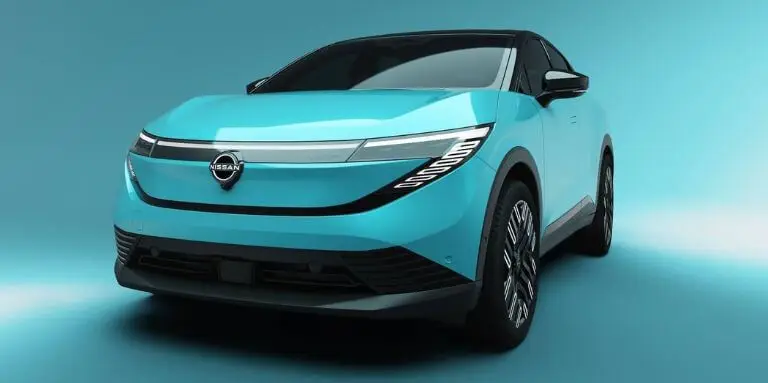
Intelligent energy management
The Japanese manufacturer has incorporated the Leaf 3's cutting-edge technologies constantly optimising energy consumption and recoveryto offer each driver an experience that is both efficient and sereneeven over long distances.
At the heart of this intelligent management system is the Nissan Energy Sharewhich not only makes it possible to monitor the vehicle's remaining charge in real timebut alsoanticipating energy needs depending on driving habits and outdoor conditions. In fact, this the system automatically adjusts charging and discharging timesThis ensures that the battery is always used optimally, without compromising performance or comfort.
What's more, Leaf 3 goes even further by incorporating advanced features such as bi-directional energy transfer (V2H), enabling the vehicle's battery to be used as a power source for the home or even to send electricity back to the grid.
See also our article :
Finally, the Leaf 3's on-board intelligence also includes driving aids such as the ProPILOT systemwhich automatically manages :
- speed,
- management
- and safety distance.
This means that optimises electricity consumption when travelling on fast lanes.
On-board technologies and experience
Latest-generation power steering
The Nissan Leaf 3 redefines the electric driving experience with top-of-the-range on-board technologies and ergonomics designed for comfort and safety.
As previously stated, at the heart of this revolution is the ProPILOT systema assistance suite which will place the driver in a an ultra-connected and peaceful environmentwhile anticipating the challenges of urban and motorway journeys.
Thanks to high-definition cameras and millimetre radarsIt will keep the vehicle centred in its lane, even on sharp bends, and adapts to traffic by braking to a complete stop if necessary.
Le intelligent cruise control will adjust the pace in real time, while the lane departure warning will automatically correct the trajectory in the event of unintentional drift.
But that's not all: automatic parking will be child's play thanks to the new technology. ProPILOT Park. At the touch of a button, the Leaf 3 will perform complex manoeuvres in parallel or in battleby managing :
- braking,
- direction,
- and acceleration.
On the other hand, thee-Pedalnow more responsive, will allow you to drive with just one pedal: release the accelerator to brake and recover energyeven at a complete standstill. Coupled with the connected navigation system, it will adapt regeneration according to traffic and topography, optimising range.
Finally, with the blind spot monitoringthe anti-collision alerts and thehead-up display thanks to 7-inch digital instrument clusterLeaf 3 will turn every journey into a seamless interaction between driver and technology.
Infotainment and connectivity
Nissan Leaf 3 elevates the user experience with a intelligent connected ecosystemdesigned to anticipate drivers' needs while seamlessly integrating smartphones and digital services. At the heart of this revolution is a redesigned infotainment system and features that transform the cabin into a veritable technology hub.
According to reports, this electric SUV will inherit the NissanConnect system evolved, with a 8-inch touchscreen optimised for instant responsiveness. Compatible Apple CarPlay and Android AutoIt will seamlessly integrate mobile applications (Google Maps, Spotify, WhatsApp), making it possible to manage navigation, music and calls in total security via voice commands.
In a second phase, the Leaf 3 will offer a door-to-door navigation with 3D maps and real-time traffic updates (Premium Traffic). At the same time, the automatically identifies charging stations compatible on the route and calculates the optimum stopping times to maximise journey efficiency.
See also our article :
Good to know Nissan specifies that all Leaf 3 technical specifications to be unveiled by mid-2025 for a on sale towards the end of the year. Like the new Micrathe first images of which have also been revealed, the The new generation is due to go on sale later this year..
Summary table of technical specifications for the Nissan Leaf 3
| Features | Nissan Leaf 3 |
|---|---|
| Type of vehicle | Compact electric SUV |
| Platform | CMF-EV |
| Battery | 87 kWh (useful capacity) |
| WLTP range | > 600 km |
| Rims | Up to 19 inches |
| Infotainment | 8" to 12.3" touch screen, NissanConnect, Apple CarPlay/Android Auto |
| Assisted driving | ProPILOT Assist, ProPILOT Park, lane keeping, improved e-Pedal |
| Connectivity | Real-time 3D navigation, V2H (vehicle-to-home), NissanConnect application |
| Security systems | Blind spot monitoring, emergency braking, head-up display |
| Energy technology | Intelligent management, adaptive regeneration, intelligent recharging |
| Production | Nissan EV36Zero plant (Sunderland, UK) |
| Scheduled for sale | End of 2025 |
Nissan's positioning and ambitions for the Leaf 3
Made in Sunderland (United Kingdom) as part of the EV36Zero projectThe Leaf 3 will benefit from the eco-bonus from a plant powered by 100 % of renewable energy. In fact, this made in Europe" positioning is making it more attractive than Asian models, while at the same time reducing its carbon footprint. . nevertheless, no communication has been made on the list price.
See also our article :
With the Leaf 3, Nissan aims for a leading share of the electric SUV segmentThis offensive is part of the Group's ongoing investment in new vehicles, while preparing for the arrival of the electric Micra (2025) and the electric Juke 100 % (2026). This offensive is part of a 1.29 billion euros to electrify its UK plantsymbolising an unprecedented industrial commitment.
Conclusion
With this third generation, the Nissan Leaf 3 confirms its transition from electric mobility pioneer to real Premium technology electric SUV. A bold new design, a range of over 600 km WLTP, a high-capacity battery, latest-generation on-board technologies, semi-autonomous driving and connected services: everything in a premium electric SUV. this model has been designed to meet the expectations of driversWhether you're a discerning individual or a professional looking for a durable, reliable and efficient vehicle.
This repositioning is part of a clear vision: to offer a European electric vehicle that is both efficient and managercapable of asserting itself in a fast-changing market. In other words, with the Leaf 3, the Japanese brand is reaffirming its ambitions for leadership in electromobilityIt is also preparing the future of its range with the electric Micra and Juke 100 %.
You would like toto electric?
Beev offers multi-brand 100% electric vehicles at the best prices, as well as recharging solutions.
